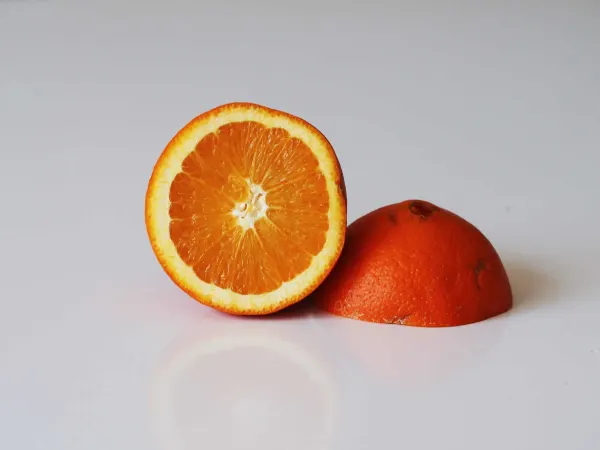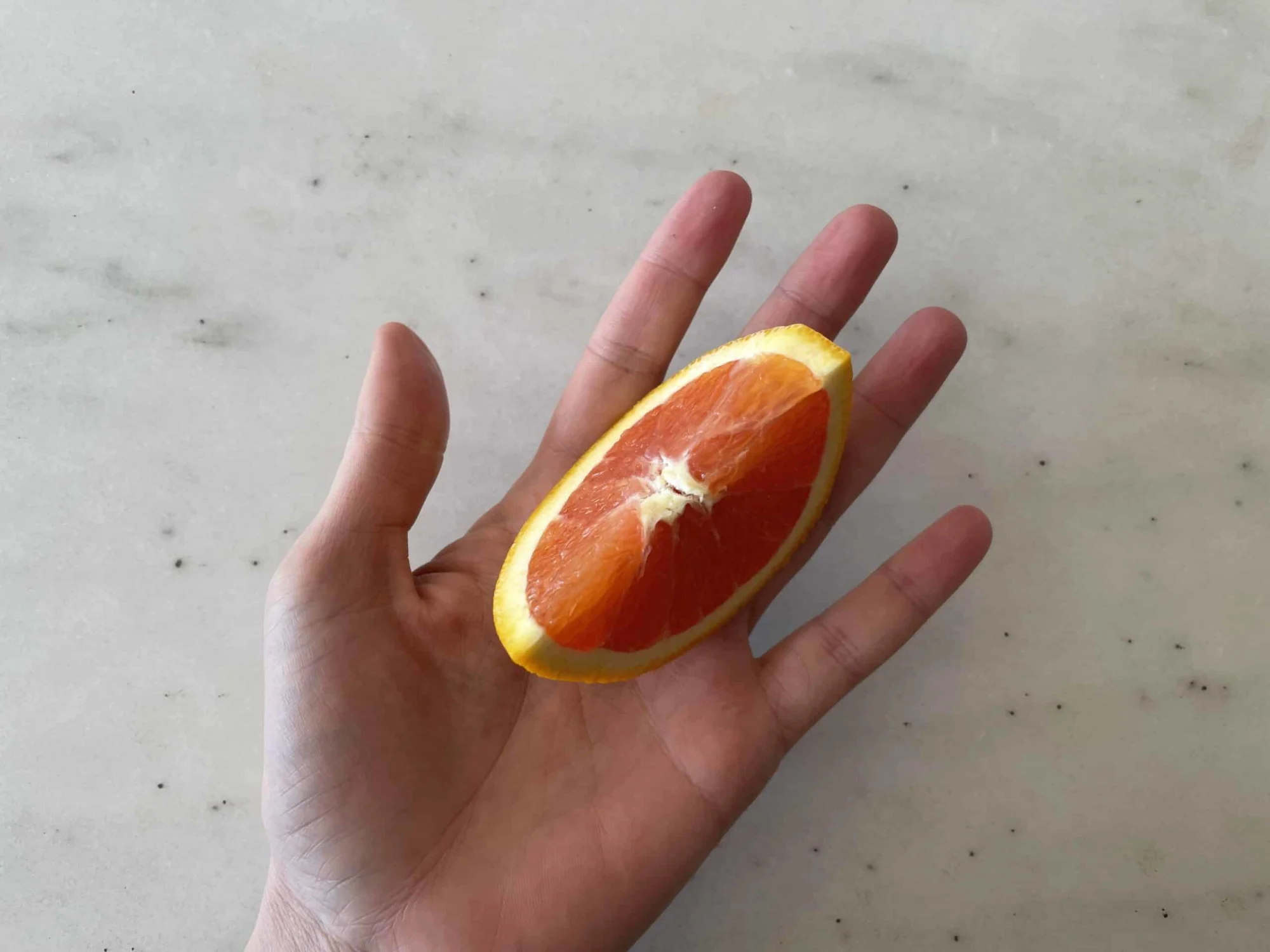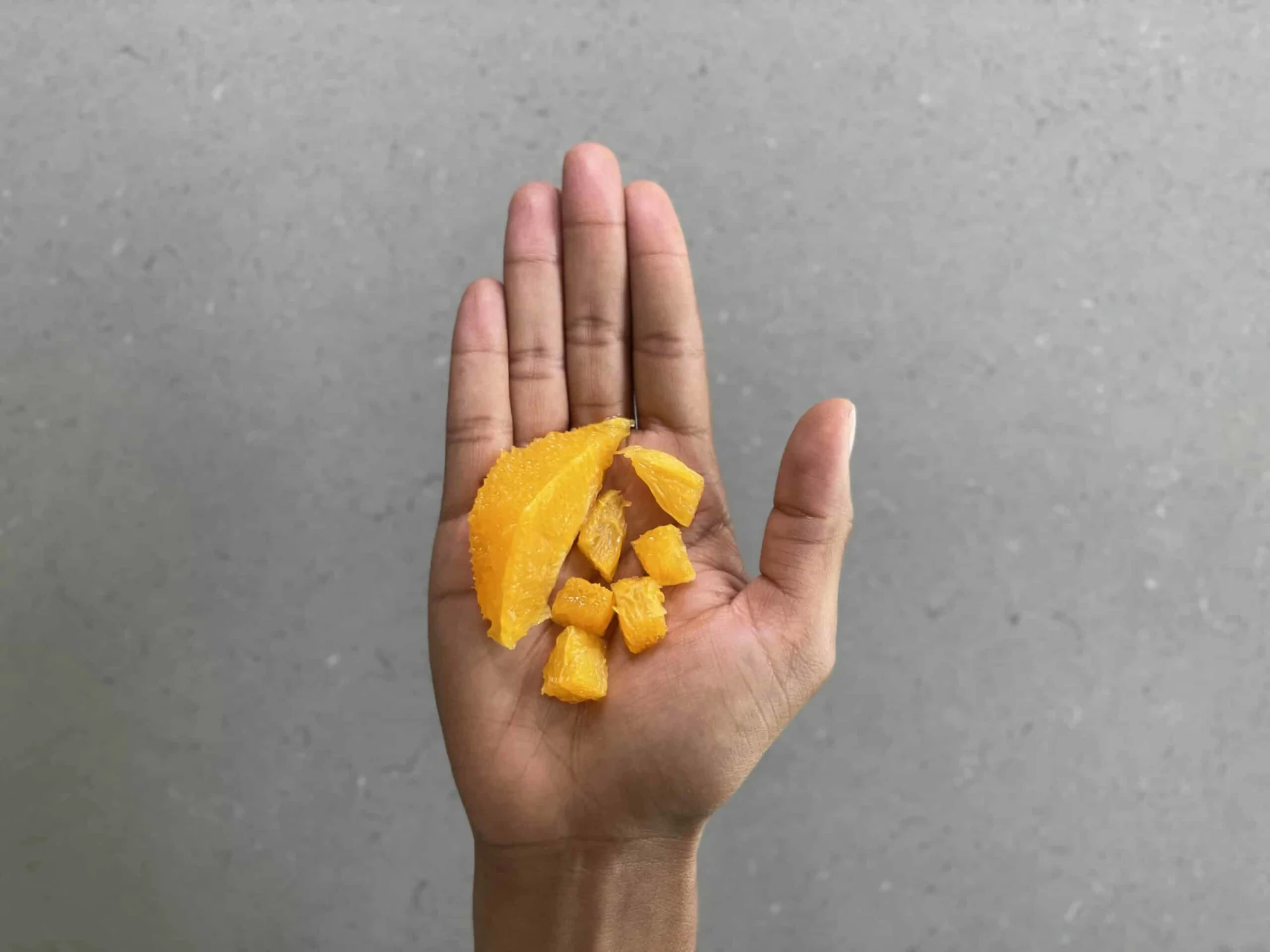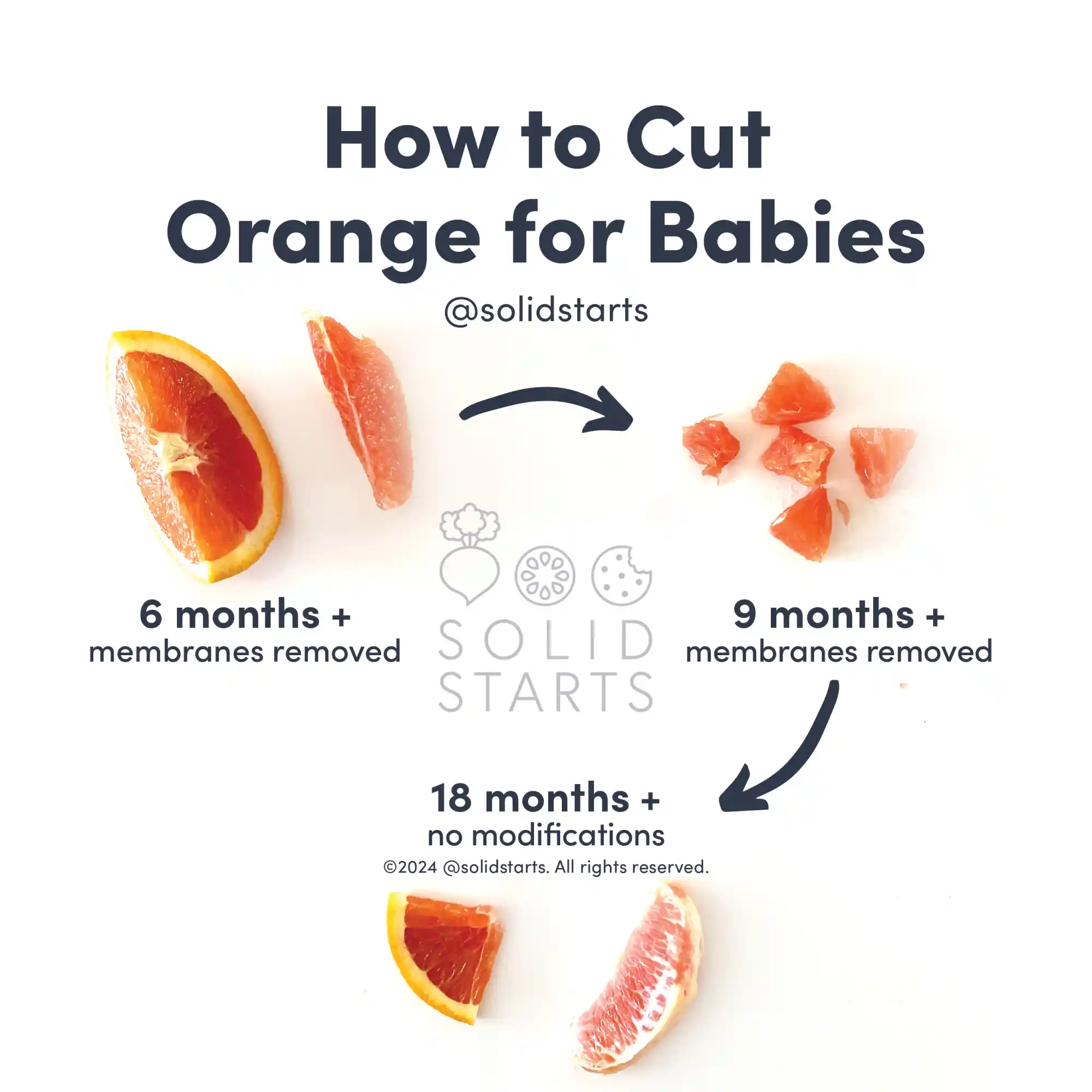Orange
Fruit
Age Suggestion
6 months
Iron-Rich
No
Common Allergen
No

When can babies have oranges?
Oranges may be introduced as soon as baby is ready to start solids, which is generally around 6 months of age. Note that oranges are acidic and may cause a harmless and temporary rash upon contact with skin and also may cause or worsen diaper rash.
Oranges range in flavor from bitter to sweet. The sweet ones are descendants of the mandarin and the pomelo—a happy pairing thousands of years ago in Southeast Asia that spawned hundreds of varieties that now grow in warm, humid climates around the world.
Are oranges healthy for babies?
Yes. Oranges are rich in carbohydrates, fiber, and fluid, in addition to vitamins A, B6, and C. They also offer potassium, folate, and antioxidants like flavonoids. Together, these nutrients work together to provide energy to fuel baby’s play and development, support digestive health, and aid in hydration. These nutrients also support vision, metabolism, immune function, electrolyte balance, nervous system functioning, and bodily repair and recovery. Orange peels contain numerous plant-based compounds like flavonoids that have anti-inflammatory and antioxidant properties to support bodily repair and recovery.
Are oranges a common allergen?
It’s complicated. Orange is not classified as a common food allergen in the United States. However, self-reported sensitivity to citrus is described frequently in medical literature around the world. Also, individuals with Oral Allergy Syndrome (also called pollen-food allergy syndrome) may be sensitive to citrus fruits such as oranges. In particular, individuals who are allergic to grass and certain tree pollens may also be more sensitive to citrus fruits. Oral Allergy Syndrome typically results in short-lived itching in the mouth and is unlikely to result in a dangerous reaction.
In some cases, allergy to proteins in orange can result in serious reactions. There is evidence to suggest that the major allergens causing serious allergic reactions to orange are concentrated within the seed of the fruit—and while uncommon, chewing the seeds may be responsible for allergic reactions.
There are also reports of orange ingestion contributing to eczema. In addition to being sweet, many oranges are also acidic, and the acid in citrus fruit can cause a harmless rash on the skin, typically around the mouth. It usually dissipates shortly after it shows up.
As you would when introducing any new food, start by offering a small quantity for the first couple of servings. If there is no adverse reaction, gradually increase the quantity over future meals.
Are oranges a choking hazard for babies?
Yes. Citrus segments (if left in the surrounding membrane) have small, tapered ends and have a slippery, mixed consistency, qualities that increase the risk of choking. To reduce the risk, prepare and serve orange in an age-appropriate way as described in the How to Serve section. As always, make sure you create a safe eating environment and stay within an arm’s reach of baby during meals.
Learn the signs of choking and gagging and more about choking first aid in our free guides, Infant Rescue and Toddler Rescue.
Videos
When can babies drink orange juice?
Small amounts of orange juice may be shared as a drink after 12 months of age. That said, it can be beneficial to wait for when a child is older to regularly share juice and other sugary drinks. Research suggests that regular intake of juice and other sweet drinks tends to increase the risk of dental cavities and take up space in the belly, which may decrease a child’s motivation to eat other foods at mealtime and may negatively affect the child’s growth. However, occasional servings of juice after one year of age generally isn’t a cause for concern. Learn more about serving juice to babies and toddlers.
How do you serve oranges to babies?
Every baby develops on their own timeline, and the suggestions on how to cut or prepare particular foods are generalizations for a broad audience.
6 months old +:
Wash the orange, then cut into large wedges (with the peel on but seeds removed) and hand them to baby, who will suck and munch on the flesh. The rind helps baby hold the orange and allows them to independently bring it to their mouth. If baby bites through the rind, take a deep breath, and trust baby to either chew on it or spit it out. It can help to dramatically stick out your tongue to help baby move the rind forward to spit it out. Remember the airway is the size of a drinking straw, so a large piece of rind, even if unchewed, is unlikely to get lodged in this small tube. Alternatively, you can supreme an orange by cutting each segment out of the membranes and offering whole segments that way (see video below). Avoid offering whole segments of clementines, mandarins, or other small oranges in their membranes as they can be choking hazards.
9 months old +:
As baby’s pincer grasp develops (where the pointer finger and thumb meet), move down in size to bite-sized pieces of orange that have had the peel, membrane, and seeds removed. If you feel comfortable with it, you may continue to offer whole, large segments of oranges with the membrane and seeds removed for biting and tearing practice. Remember that clementines, mandarins, and other small citrus fruit segments left in their membrane can be a choking hazard, so when in doubt, supreme the fruit, which will be easier to do with a large orange.
18 months old +:
At this age, if you feel comfortable with the toddler’s chewing and swallowing skills, try offering large orange segments with the membrane left intact. Bigger pieces to bite and scrape will be less of a choking risk than say, a small segment of mandarin orange in the membrane (which a toddler may attempt to swallow whole.) Of course, you can also continue to supreme the fruit and offer bite-sized pieces or large wedges of orange on the peel for biting and tearing practice.


Chef Bruna Chavez demonstrates how to supreme an orange (to remove the segments from the papery membrane).
A mom uses a grapefruit knife to cut mandarins out of the membrane.
Learn about which foods to avoid when starting solids in our guide 25 Foods Never to Feed Your Baby.
Written by
Expert Tips Delivered to Your Inbox
Sign up for weekly tips, recipes and more!
The content offered on SolidStarts.com is for informational purposes only. Solidstarts is not engaged in rendering professional advice, whether medical or otherwise, to individual users or their children or families. No content on this site, regardless of date, should ever be used as a substitute for direct medical advice from your doctor or your medical or health professional, nutritionist, or expert in pediatric feeding and eating. By accessing the content on SolidStarts.com, you acknowledge and agree that you are accepting the responsibility for your child’s health and well-being. In return for providing you with an array of content “baby-led weaning” information, you waive any claims that you or your child may have as a result of utilizing the content on SolidStarts.com.








